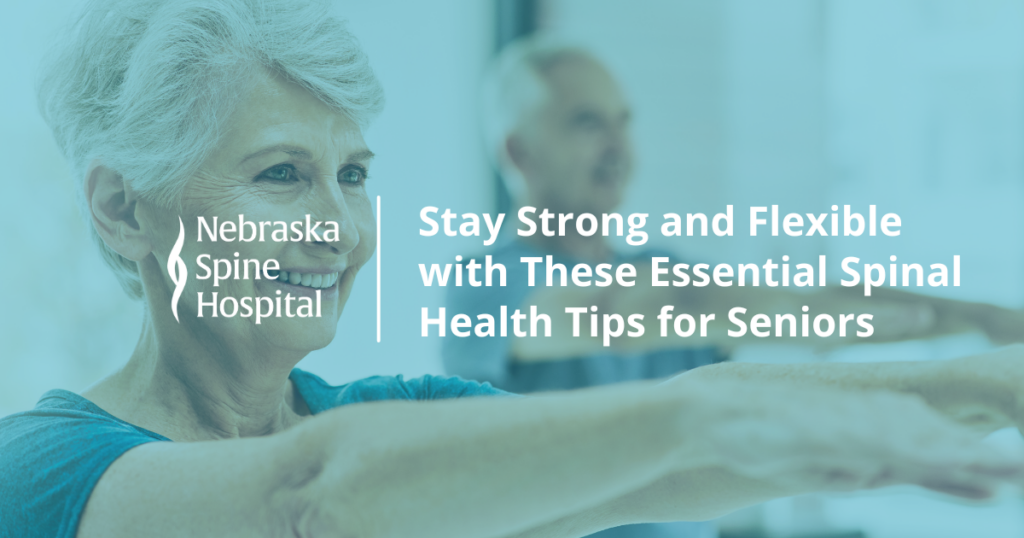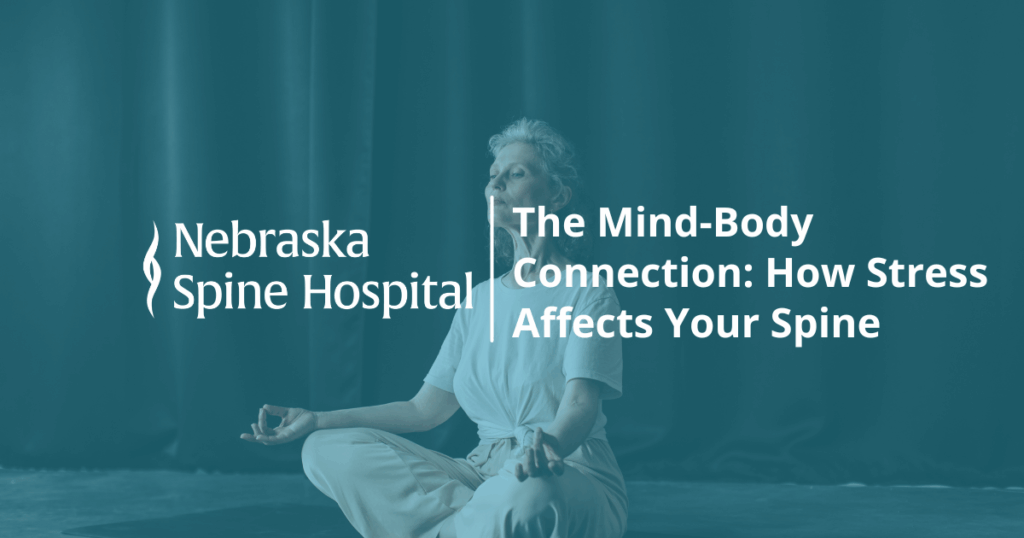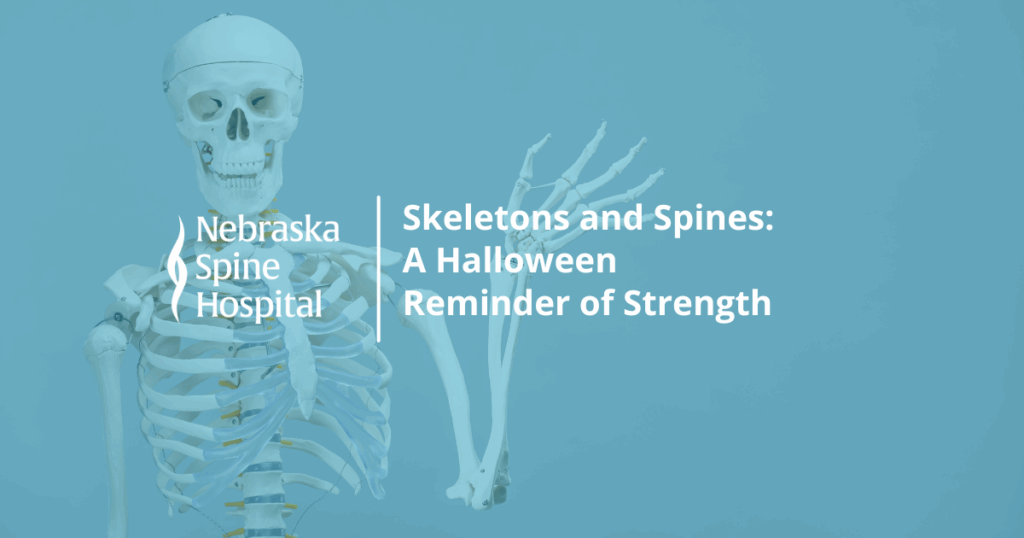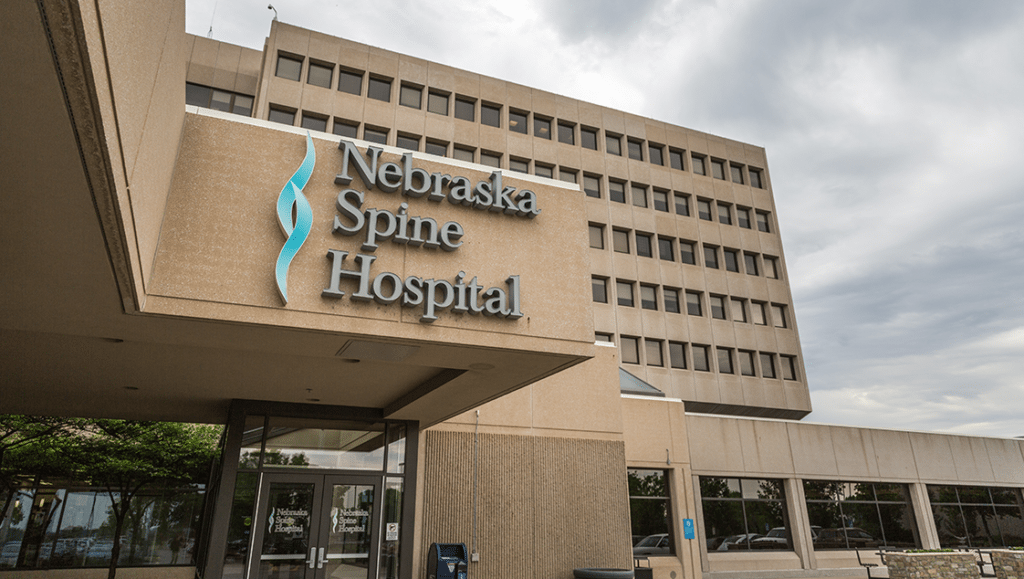Maintaining your spinal health is key to living an active, pain-free life as you age. While natural changes in the spine are part of the aging process, there’s a lot you can do to keep your back strong, flexible, and supported. At Nebraska Spine Hospital, we’re here to guide you in caring for this vital part of your body, so you can enjoy a higher quality of life.
*Please always check with your physician when starting any workout or nutrition program.
Here are some practical tips to help seniors maintain spinal health and mobility:
1. Keep Moving with Gentle, Low-Impact Exercises
Regular physical activity is one of the most effective ways to promote spinal health. Exercise strengthens the muscles that support your spine, improves flexibility, and encourages healthy blood flow to spinal tissues.
Some excellent low-impact activities for older adults include:
- Walking: A fantastic way to maintain spinal mobility without putting excessive stress on your joints.
- Swimming or Water Aerobics: These are particularly gentle on the spine while giving you a full-body workout.
- Yoga or Tai Chi: Both exercises improve flexibility, balance, and core strength, which are essential for spinal stability.
Targeted exercises like seated leg lifts, bridges, or gentle planks can also strengthen core muscles, providing better support for your spine. Always check with your healthcare provider before starting a new exercise routine to ensure it’s safe for you.
2. Prioritize Balanced Nutrition for a Healthy Spine
What you eat can have a big impact on your spinal health. A nutrient-rich diet supports your bones, discs, and muscles, helping them stay strong and resilient as you age.
Make sure your diet includes:
- Calcium and Vitamin D for bone health. Great sources include dairy products, spinach, kale, fortified cereals, and fish like salmon or mackerel.
- Magnesium for muscle and nerve support, found in nuts, seeds, and whole grains.
- Anti-Inflammatory Foods like berries, olive oil, and turmeric, which can help ease pain and stiffness caused by arthritis or degenerative disc conditions.
- Plenty of Water: Staying hydrated keeps spinal discs well-lubricated, helping them continue to cushion and support your spine.
A balanced diet boosts not just your spine but your overall well-being, giving your body the tools it needs to repair and protect itself.
3. Practice Good Posture and Ergonomics Daily
Poor posture is one of the leading causes of back and neck pain. Making small adjustments in the way you sit, stand, and sleep can have a big impact on your spinal health.
Here’s how you can improve your posture:
- When Sitting: Choose a chair that supports the natural curve of your lower back. Keep your feet flat on the floor and avoid crossing your legs.
- When Standing: Distribute your weight evenly between both feet and engage your core muscles for added support.
- When Sleeping: Use a supportive mattress and align your neck and spine with the right pillow. Side sleepers can place a pillow between their knees to relieve pressure on the lower back.
Additionally, incorporate ergonomic changes into your daily routine. For example, if you work at a desk, position your computer monitor at eye level and use a supportive chair. These small tweaks can go a long way toward minimizing spinal discomfort.
4. Don’t Skip Routine Health Screenings
Detecting and addressing spine-related issues early is critical to maintaining your health and mobility. Routine health screenings should be a regular part of your care plan, especially as you get older.
What to consider:
- Bone Density Tests: These can identify early signs of osteoporosis, reducing the risk of fractures.
- Imaging Studies: X-rays or MRIs can detect structural changes like spinal stenosis or herniated discs.
- Spine Check-Ups: Regular visits with a spine specialist allow for proper monitoring of any changes in your back health.
If you notice persistent symptoms like back pain, stiffness, or tingling in your legs, consult your doctor immediately. Early intervention can prevent these issues from becoming more severe.
5. Manage Spinal Pain Effectively
While occasional back discomfort can be normal as you age, chronic or worsening pain should never be ignored. Simple remedies like heat therapy, cold packs, or over-the-counter pain relievers may provide short-term relief. Gentle stretches can also ease stiffness and improve circulation.
We understand the unique needs of aging spines. Our highly skilled team of surgeons and specialists is committed to providing personalized care using advanced treatments and cutting-edge technology. Whether it’s preventative advice, diagnostic tests, or surgical intervention, we’re here to help you achieve a healthier, more active lifestyle.









